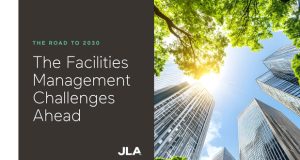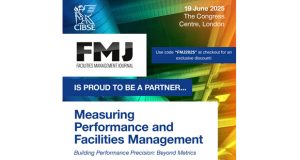 By Peter Hayes, Head of Facilities Management at Rapleys
By Peter Hayes, Head of Facilities Management at Rapleys
Much focus has been on the need for customer experience, amenities and services in schemes in order to both attract and retain tenants, yield income and add value to developments – particularly in the BTR and prime offices world.
However, as an industry colleague once pointed out to me, “what’s the point of spending all that money on a state-of-the-art gym if the lift doesn’t work for someone who needs to get to the ninth floor?”
The reality is that a good scheme does deliver exceptional customer experience, but it starts with the basics, the functionality. And that’s where facilities management comes in. That doesn’t mean that all FMs are basic or the same – far from it. A good FM is innovative, trustworthy and understands and mirrors the client’s values and priorities.
The four pillars of Facilities Management are people, processes, the building and the technology. That means all need to be thought about with every strategic decision and approach.
The best first approach is a simple one, focused on people primarily: “Come to work safe, go home safe”. Everything else comes second. Health & Safety monitoring and experience cannot be anything other than superlative from security to air quality, access to wellbeing, cleaning to repairs.
It’s one thing fixing what’s broken but a good FM pre-empts and plans to mitigate future issues and risks. Looking at maintenance years ahead is also much more cost-effective than a ‘whack-a-mole’ approach, tackling each problem as it rears its head. The key to this is a mixture of experience and insight, technology and data. If we know every material used, every date of every installation, repair, certification and check, all details about every supplier, how much we use of every utility, how often some areas need cleaning vs others and so on, then we can work out where we need to focus more time and energy, pre-empt likely issues and feed this into the future strategy, improving the management all the time whilst budgeting better.
FM is also key to identifying and delivering cost and energy saving opportunities and initiatives. At the coal face we can see how people interact with the different parts of a building and what’s being used (or not). This is insight that can’t be guessed at: people’s behaviours, actions and preferences.
A welcoming, friendly and trustworthy team on site also means we can support people and service them, whilst engaging in customer and stakeholder feedback.
All of this information also leads into better design and layout which can optimise productivity for a business. A more productive and happy business will be more likely to stay and pay higher rents in response which adds value to an asset and helps it perform.
And how do you know your asset is truly performing or not? Through transparency of data and reporting: perhaps the most important tool of all in the FM arsenal.
Clients need to have total comfort that their assets are not only being looked after, but performing as well as they can be. The only way for them to know this for sure is to provide totally transparent and accurate reporting.
This is best done with regular reports that show all compliant assets as well as non-compliant ones, providing full mitigation into what can be done with the latter, should those arise. FM is often the first area to flag any potential risks through careful monitoring of assets and analysis of performance, both current and future.
Such transparency will also allow facilities managers to show the client an asset’s depreciation chart which will demonstrate when the asset will cost more to run and thus when money is needed to be saved to invest or replace.
By both presenting and monitoring this information FMs will be able to ensure that the client does not have any unforeseen expenditure and are able to keep service charge levels down whilst still providing a best-in-class service.
That’s why transparency matters and why FM ultimately adds value in the present and future.




